The December Details & A Year In Review
ART
Content Courtesy of: artnews.com
Written by: Tessa Solomon
The Year in Technology: Augmented Reality Works, New Digital Art Platforms, and Much More from 2019
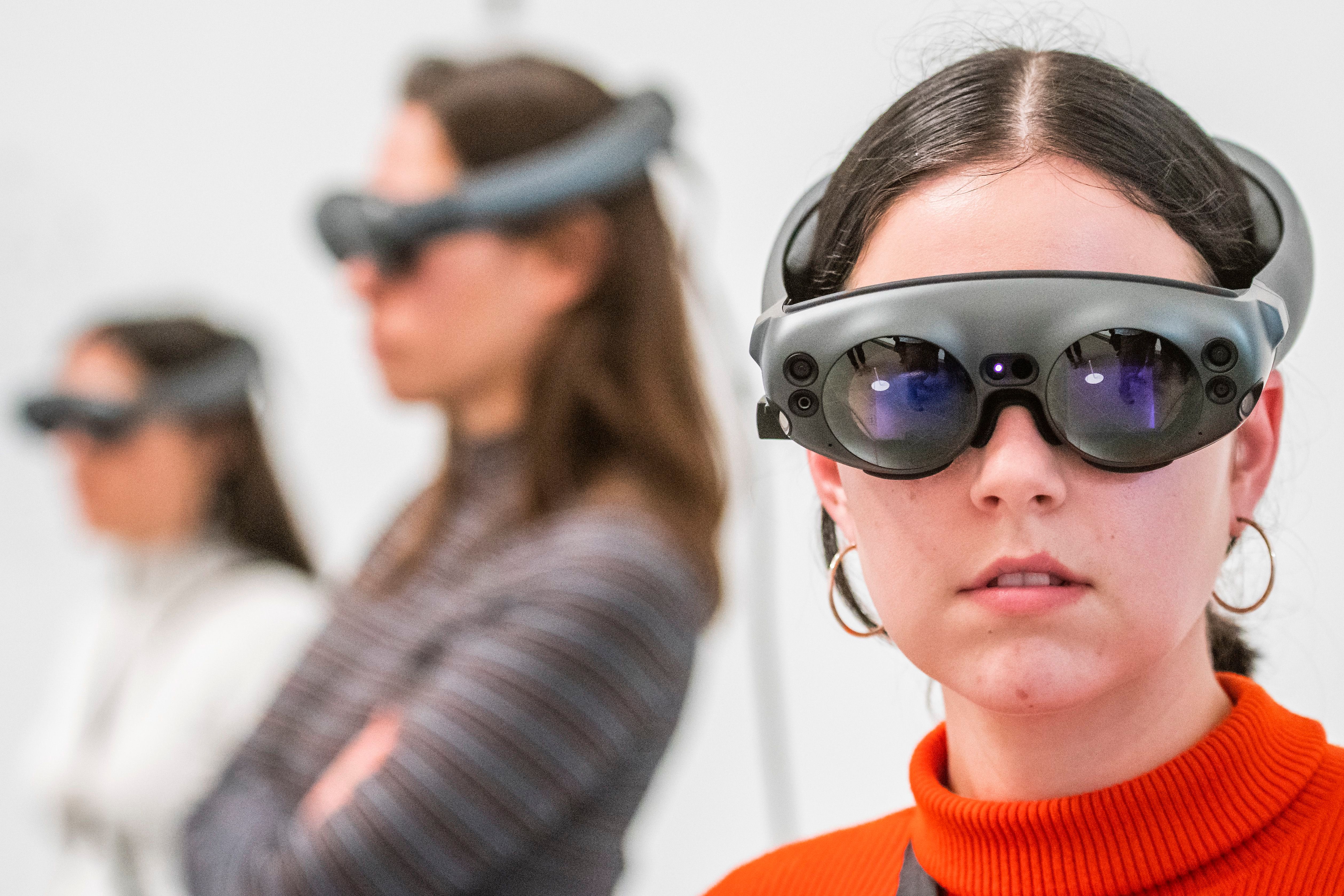
Visitors using VR goggles at Serpentine gallery in London. GUY BELL/SHUTTERSTOCK
Is technology closely watching us, or are we closely watching technology? This year, the boundaries grew even thinner between machines and people—AI is grading tests in classrooms across the country, a popular Russian face-aging app sparked widespread panic over data privacy. In July, a Florida judge granted police access to GEDmatch, a widely-used DNA database similar to Ancestry. These developments were reflected in the art world, where artists and auction houses experimented with the possibilities of technology, museums launched new digital platforms, and new apps were made. What follows, in no particular order, are some of the year’s defining art-and-tech initiatives.
Christie’s Aims to Make History With Sale of First Mixed-Reality Work
AI-generated works and virtual reality pieces were long thought by many to be impossible to sell, but auction houses are pushing forward, making available works involving new technologies with aplomb, and next year, a new precedent could be set. In 2020, Christie’s will sell the first mixed-reality work ever to hit the auction block: Marina Abramović’s The Life. (Mixed reality differs from virtual reality in that the surrounding environment is still visible, even with while wearing a headset.) The sale of was announced in November after the work debuted at London’s Serpentine Galleries. The 19-minute piece features Abramović pacing around, occasionally flickering in and out of vision, and it was met with reviews that were less than positive—Guardian critic Jonathan Jones wrote, “I’ve only experienced events this vacuous at really bad concerts.” But the auction house seems hopeful that the work will be bought for somewhere in the range of $775,000, with the buyer will receiving a recording of the piece and “wearable spatial computing devices,” according to Christie’s. The piece could set a new auction record for Abramović—and change the state of digital works on the market.
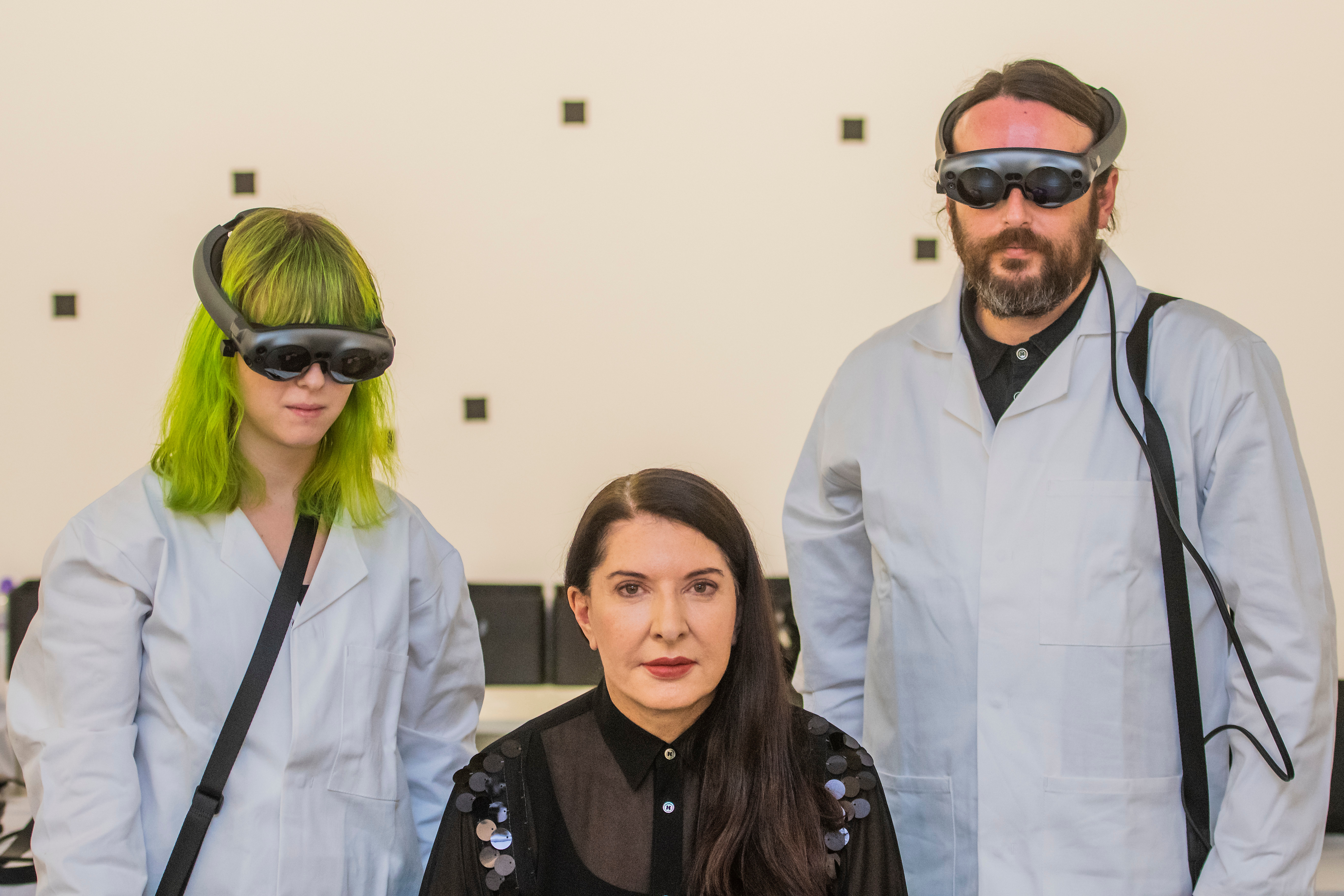
Marina Abramović with technicians. GUY BELL/SHUTTERSTOCK
Alan Michelson Reveals Ugly Parts of American History Through AR
For his solo show at the Whitney Museum in New York, Alan Michelson, a Mohawk member of Six Nations of the Grand River, created four works that explore the impact of colonialism on Indigenous peoples and the destruction of the land on which they live. The show included two augmented reality works, both produced with the help of artist Steven Fragale, that can be accessed through an app. When one of those AR works, Sapponckanikan (Tobacco Field) (2019), is activated, a circle of tobacco plants indigenous to New York appears on one’s phone screen, looking as though it had sprouted through the floors of the Whitney’s lobby. And, when viewed through the app, Town Destroyer (2019) reveals a three-dimensional bust of George Washington overlaid with moving images and audio relating the story of the Sullivan-Clinton Campaign of 1779, a scorched-earth invasion of the Haudenosaunee homelands ordered by the founding father. Michelson’s new pieces are AR works at their best—they reveal the unpleasant realities of our own world that are often kept out of sight from many people.

Posthuman Studies’s Russian Ferations (2019) is one of several works commissioned by Garage Digital. COURTESY THE ARTIST
Moscow’s Garage Museum Launches a Pioneering Online Art Platform
In December, the Garage Museum of Contemporary Art in Moscow launched Garage Digital, a platform for digital artworks that could become a major resource for artists and the public alike. Through it, curators at the museum will commission new artworks, and research materials—including documentary videos and academic studies—will be made available. Currently, Garage Digital is hosting new artworks by Sascha Pohflepp with Matthew Lutz and Alessia Nigretti, Gints Gabrāns, and James Ferraro and Ezra Miller; the museum has promised more to come in the future. There will also be a focus on gaming, and among the offerings on the website right now offers gameplay of Hideo Kojima’s Death Stranding (2019), one of the year’s most eagerly awaited video games which stars renders of Norman Reedus and Léa Seydoux. This isn’t the kind of material typically made available by an art museum, and it’s an example of how open-minded and essential Garage Digital could soon become.
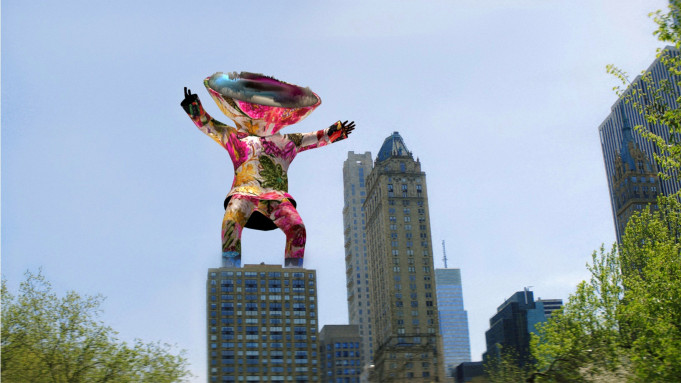
Nick Cave’s Accumul-Istic Quest. APPLE
[AR]T Walk Brings Augmented Reality to Midtown New York
There were words in the sky around New York’s 59th Street. They fell and faded, seeming to melt away into the landscape around them. This was real life, or something like it—an AR poem by the late artist John Giorno called “Now at the Dawn of My Life,” part of [AR]T Walk, which was started by Apple and the New Museum in New York. Not unlike Pokémon Go, participants could point iPhones—loaned by Apple and loaded with the [AR]T Viewer app—at predetermined locations and view large-scale artworks become visible. The results left something to be desired—none were particularly memorable—but the talent that the initiative had enlisted, which included artists such as Nick Cave, Nathalie Djurberg, Hans Berg, Cao Fei, Carsten Höller, and Pipilotti Rist, was impressive.
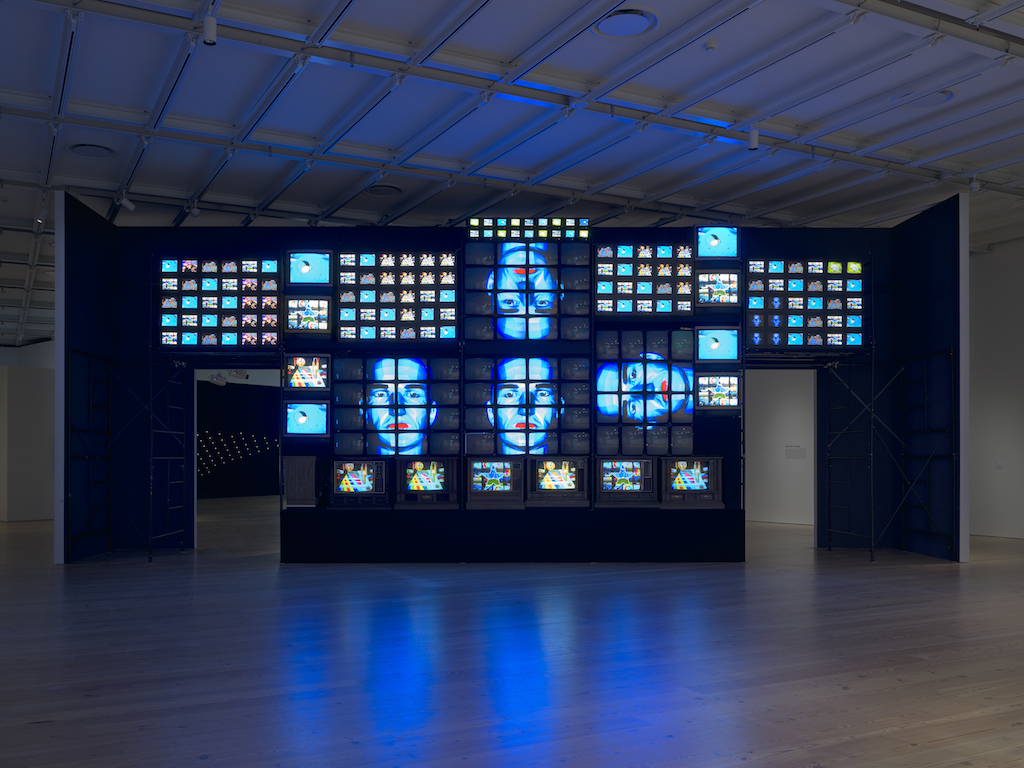
“Programmed: Rules, Codes, and Choreographies in Art, 1965–2018” at the Whitney
From foundational works of Minimal and Conceptual art, like a Sol LeWitt wall drawing from 1976, to a restored version of Nam June Paik’s hypnotic video wall Fin de Siècle II (1989), to several digital works recently commissioned by the Whitney, this show, which opened in 2018 but closed in 2019, charted the ways systems, mathematics, and choreographies have altered art dealing with technologies. Curated by Christiane Paul, the show included some of the best works making use of technology in recent years, among them Mendi + Keith Obadike’s The Interaction of Coloreds (2002/18), which allows users to determine the correct HTML coding for their skin tone by filling out a questionnaire which included prompts such as, “Has your skin color ever been in vogue?”
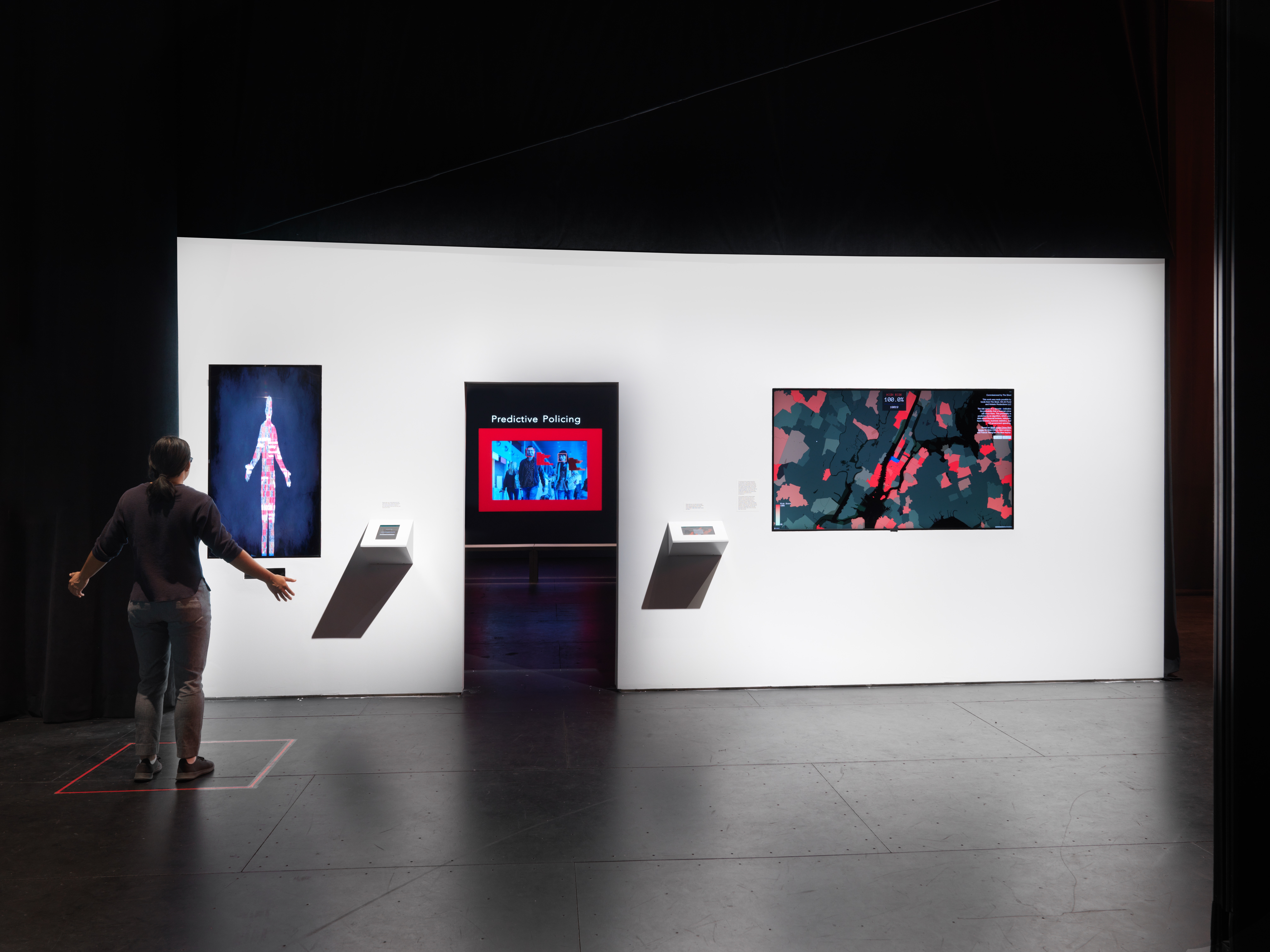
Lynn Hershman Leeson’s Shadow Stalker (2019) at the Shed. DAN BRADICA
Lynn Hershman Leeson’s Shadow Stalker Tells Us About Ourselves
A pioneer in her field, Lynn Hershman Leeson has long questioned what separates our bodies from cyberspace and the surveillance state. Shadow Stalker, her latest work—now on view in the Shed’s “Manual Overdrive” show—deals with the practice of data mining, in which personal information is collected online by entities and corporations, often in ways that are not immediately disclosed to the users themselves. Hershman Leeson’s installation uses technology similar to the predictive policing system deployed by American law enforcement departments to gather data that could forecast where future crimes will occur. (Such practices have been controversial, with some alleging that officials have used them to target low-income and predominantly nonwhite communities.) At the Shed, viewers are invited to enter their email address, and Hershman Leeson’s algorithm fetches chilling results: old home addresses, the names and prior locations of loved ones. It’s a creepy work about the uneven power dynamics that guide the way we use digital technology—and an instructive one about the dangers of putting too much information into our beloved machines.
Content Courtesy of: artnews.com
Written by: The Editors of ARTnews
2019: The Year in Review
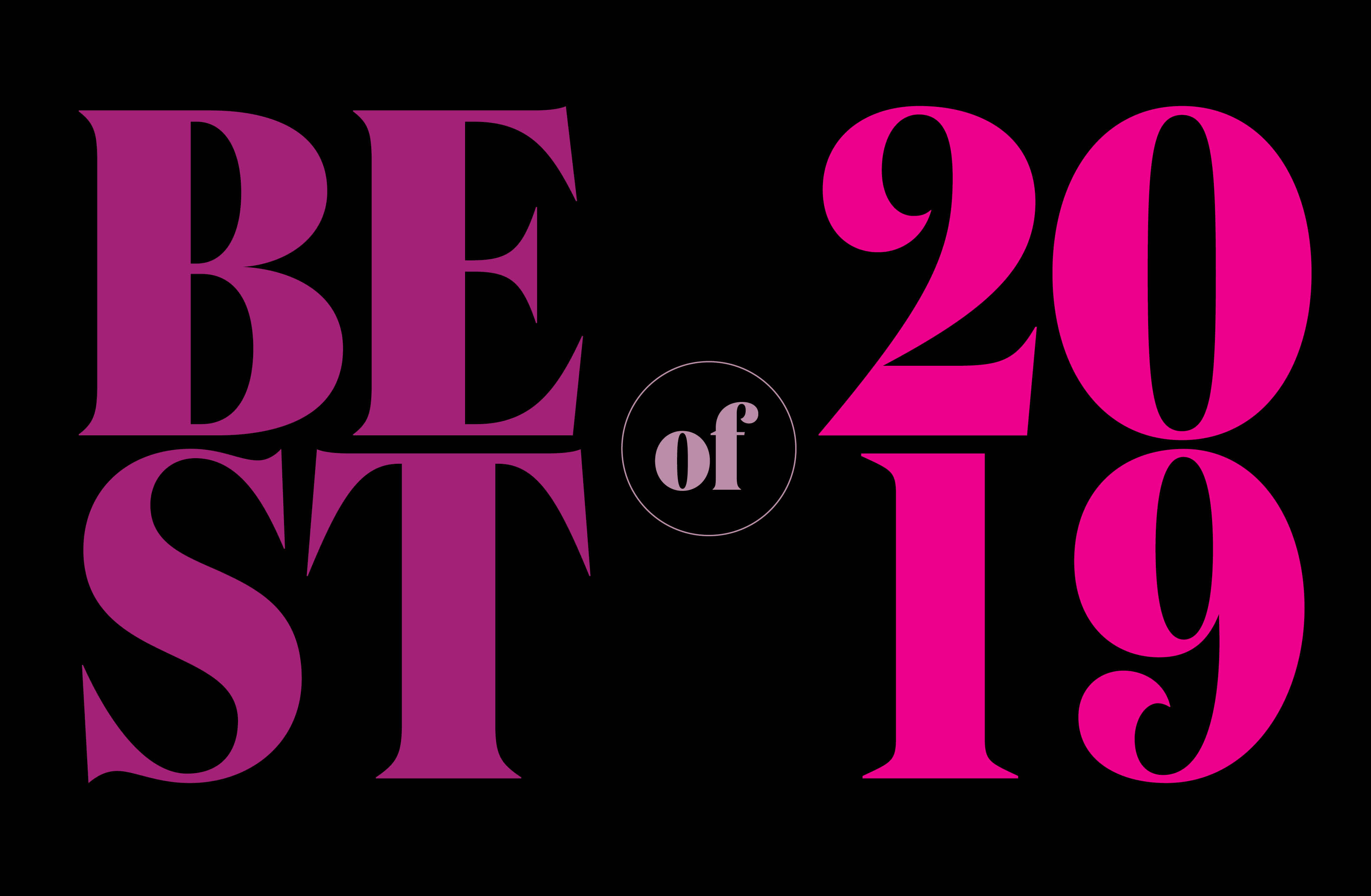
With 2019 coming to a close, the editors of ARTnews have looked back on the past year in the art world. Artists pushed boundaries by making use of new technologies, and major figures were lost. Below, a complete guide to our year-end coverage.
The Year in, and Beyond, New York’s Galleries—Plus a Top 10 from All Over
ARTnews executive editor Andrew Russeth picks his favorite shows on view in New York, plus some more exhibitions on view around the country.
The Year in Screens
ARTnews senior editor Alex Greenberger addresses the defining moving-image and digital works of 2019.
The Year in Sound
ARTnews deputy editor Andy Battaglia selects his favorite music, sound artworks, writings, and more from throughout the year.
The Year in Books
The editors of ARTnews pick their favorite books of the year, from an anthology of Peter Schjeldahl’s writings to a volume about criticism that costs just $5.
The Year in Technology
A look back at some of the biggest developments in art and technology over the past year.
Art World Luminaries Who Died in 2019
See a slideshow of the major figures lost this year, from pioneering artists to historians who penned groundbreaking criticism.
The Most-Read ARTnews Stories of 2019
From a controversial banana at Art Basel Miami Beach to Mary Boone closing her gallery, these were the most-read ARTnews articles of the year.
ADVERTISING
Content Courtesy of: adage.com
Written by: Adrianne Pasquarelli
5 TIMES AI REPLACED HUMANS IN MARKETING IN 2019
Chase, Kohl's and Essence all tapped machines for tasks this year
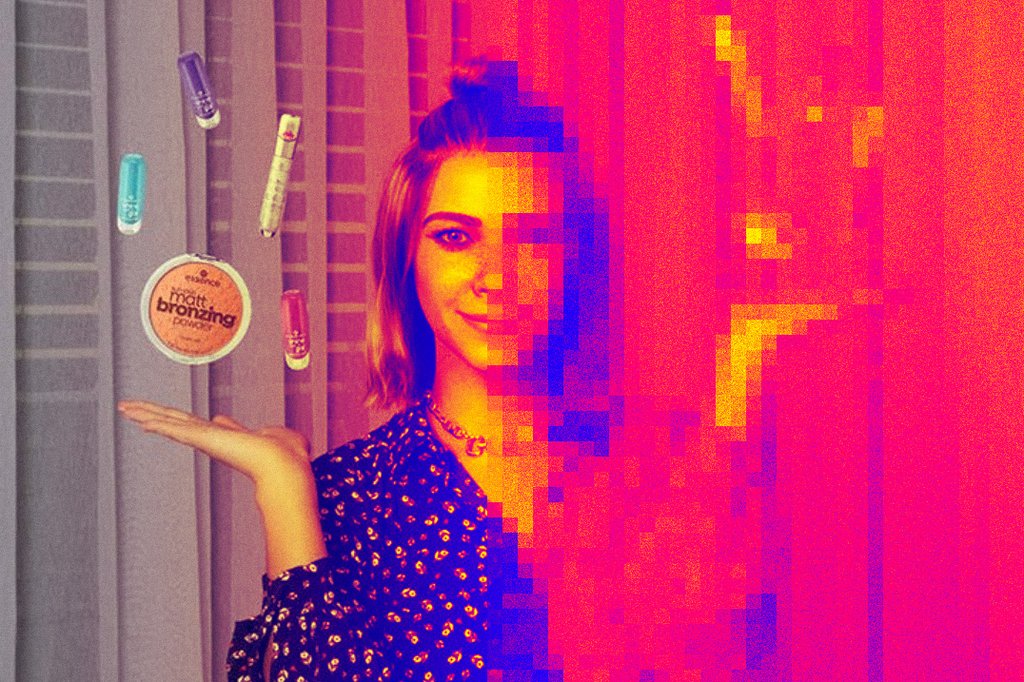
Essence Credit: Illustration by Ad Age. Composite image: Essence cosmetics
We haven’t quite reached peak robot, but we are getting closer every year. In 2019, artificial intelligence took over as copywriters, media buyers and influencers. We’ve come much farther than a half-century ago, when Ad Age chronicled 10 newsmakers that included eight men, one woman and a computer. At the time, a Xerox executive warned “We are all in danger of being drowned in data.” What would he say now?
Machines beat humans at Chase
After a trial in which artificial intelligence outperformed humans for tasks such as writing ad copy, the bank tapped Persado, a company that applies AI to marketing creative, for a five-year deal. Kristin Lemkau, who was CMO of JPMorgan Chase at the time and is now head of U.S, wealth management, called the technology “incredibly promising.” Perhaps not for marketing creatives, though.
A different kind of holiday elf
Kohl’s called on some extra helpers this past holiday season—in the form of computers. The retailer continued a trial with Google it began over the summer to add more AI to its digital media buying. The retailer also said it is incorporating more AI into email subject lines and banner ads.
All of the faces of hunger
Feeding America created a composite image of the people across the nation who visit food banks—that image, of a woman with short dark hair, headlined the nonprofit’s campaign earlier this year.
Robots write the news
This one hit close to home. Patch, the local news site operator, used AI to write articles, chiefly run-of-the-mill stories and data. The publisher, which said it was relieving staffers of tedious work, posts around 3,000 stories each week through the technology.
Weird science
Machines can be influential, too, as cosmetics brand Essence proved this month when it created a virtual influencer for Instagram. Other non-real stars include Lil Miquela, whose kiss with supermodel Bella Hadid in a Calvin Klein ad sparked backlash and an apology earlier this year.
Content Courtesy of:adage.com
Written by: Jack Neff
THE 10 WORST MARKETING BUZZWORDS OF 2019
Turn your storytelling into storyliving with hyper-relevant snackable content for a digestible experience amplified by influencers

Credit: istock
10 Worst Buzzwords of 2019
Not all these are brand new, but they’ve been trendy and will make you sound very knowledgeable and important the more you repeat them. They’re also crucial in making people hate marketers. Special thanks to Rob Estreitinho (@robistyping,) senior strategist at VCCP Kin, London, and his Douchebag Strategist @douchebagstrat Twitter bot for inspiration on some.
Brandformance – This mashup of “brand” and “performance” marketing is big now, as opposed to years past when no one cared if brand advertising performed.
Storyliving – Storytelling is so 2017. Storyliving was big at Cannes this year. Now, a brand must tell a story and “live it.” Authentically, of course, through storydoing.
Snackable – Quibi is a whole streaming service built on “snackable content,” which is really short video you can watch between train stops, or any time you’re busy storyliving.
Digestible – What snackable content becomes once ingested. Even longer-form meal-worthy content can be this if it goes down well. The opposite is barf-able content. Think Peloton.
Thumb-stopping – When your snackable content is so digestible your thumb has to stop to take in the beauty and avoid getting a cramp.
Experience – Marketers now know it’s about more than marketing. It’s the whole experience, from the smell of the package to the sound of the coins falling into the jar or the little song the card reader plays. Chief marketing officers are morphing into chief experience officers, a stroke of sneaky marketing genius for an under-appreciated job title, because it will let them run everything.
Hyper-relevant – Mere relevance is no longer enough. You need hyper-relevance, like an ad that has meaning only to your little finger. Or, as Accenture’s insurance marketing blog puts it, hyper-relevant insurers don’t simply focus on customers’ preferences or demos, but on “the evolving context in which customers make decisions.”
Hyper-targeting – Combine this with hyper-relevance and it’s so powerful that it should be licensed to keep it out of the wrong hands.
Recession – This buzzword simply failed to deliver this year, and possibly for the foreseeable future. Not so good for folks bent on defeating Donald Trump.
Influencer – It’s a real marketing phenomenon, but as a word leaves much to be desired. Many influencers do more entertaining than influencing. Then there was that guy from Iowa with 1.5 million Instagram followers who hired his cousin with a gun to make someone turn over a website domain. How much influence does your influencing have when you need a gun?
Content Courtesy of: adage.com
Written by: Ann-Christine Diaz
THE TOP 5 CREATIVE BRAND IDEAS YOU NEED TO KNOW ABOUT RIGHT NOW: DECEMBER 23, 2019
Welcome to our weekly rundown of the Top 5 most innovative brand ideas you need to know about right now.
5. Jet Blue: 'AirSMR,' MullenLowe
We’re kind of over the ASMR trend, but JetBlue’s new video from MullenLowe that jumps onto that bandwagon does something pretty extraordinary: it transforms the typically stressful sounds of the airport into a soothing experience.
4. Seventh Generation: 'Climate Carols,' Opinionated
While many of us are wrapped up in the festivities of the holiday season, eco-friendly home products brand Seventh Generation wants us to remember the dark cloud of climate change that looms overhead. The company and its agency Opinionated created “Climate Carols,” which turns holiday favorites like “Jingle Bells” and “We Wish You a Merry Christmas” into calls-to-action for environmental change.
3. Eco Six Pack Rings: 'The Simpsons Duff Beer Campaign,' We Believers
Eco Six Pack Rings is the Cannes Lion-winning product idea from agency We Believers. It's an eco-friendly version of the plastic rings on cans of beer and soda that won’t harm ocean life. The rings now appear on beer brands around the world, including Corona and Guinness, but the company is hoping to get more visibility—on cans of Homer Simpson’s favorite brew, Duff Beer. A campaign running in time for The Simpsons 30th anniversary in the show's hometown of Springfield, Oregon is targeting creator Matt Groening, promising him unlimited free rights for Duff Beer to use the Eco Six Pack Rings.
2. Popeyes: 'Help Wanted on Sundays Classified Ads,' Gut Miami
In 2019, Popeyes was on fire with its creative ideas, some of those at the expense of one of its main rivals, Chick-fil-A. In a previous campaign from Gut, Popeyes poked fun at how its competitor isn’t open on Sundays. Its latest idea continues in that vein. Popeyes placed "help wanted" ads in big publications like the New York Times and the Boston Globe, saying that it was looking for experienced chicken sandwich makers on Sundays only—to help accommodate the onslaught of orders the fast feeder has been getting for its popular sandwich on that day.
1. On the Beach: 'Everything’s Better on the Beach,' Uncommon London
Simplicity is a powerful tool. That’s evident in this standout comedic campaign for UK travel site On the Beach from Uncommon London. It pairs simple scenes and a voiceover from Iggy Pop to show how easily your troubles can melt away—when you’re on the beach.
That's it for the Top 5. Make sure to check out more of the best in brand creativity at Adage.com/Creativity.
BUSINESS
Content Courtesy of: adage.com
Written by: George P. Slefo.
Spotify to suspend political ads in 2020
Presidential hopeful Bernie Sanders and the RNC are among Spotify advertisers

Spotify announced that it would pause any political advertising on its platform. Credit: Composite by Ad Age. Images: Bloomberg Finance LP
Spotify is suspending the sale of political advertising on its platform, the company told Ad Age Friday.
Spotify said in a statement that it will pause political advertising in early 2020 across its ad-supported tier—which boosts 141 million users— as well as the streaming giant’s original and exclusive podcasts, some of which include “The Joe Budden Podcast” and “Amy Schumer Presents.” The move only applies to the U.S., as Spotify doesn’t run political ads in other countries.
“At this point in time, we do not yet have the necessary level of robustness in our process, systems and tools to responsibly validate and review this content,” the company said in a statement to Ad Age. “We will reassess this decision as we continue to evolve our capabilities.”
Presidential hopefuls such as Bernie Sanders and organizations such as the Republican National Committee have both advertised on Spotify. Though the company declined to share how much revenue it generates from political ads, a person familiar with its advertising business said it's not a significant revenue generator for the company, especially when compared to Spotify's largest money makers, such as entertainment ads for movies or shows.
Spotify joins other tech companies like Twitter and Google, which are grappling in their own ways with political messaging ahead of a likely-polarizing 2020 presidential election. For its part, Spotify says it has opted to work on its tech before reintroducing political ads to its platform at a future, unknown date.
Twitter has placed a permanent kibosh on political advertising. While Google’s effort on the matter is more nuanced, as it’s removed the ability to micro-target individuals based on their political affiliation through Google Search and YouTube. Facebook, meanwhile, is firmly entrenched with its decision not to fact check political ads run on its platform.
Other tech companies, such as The Trade Desk, a platform that media agencies use to buy digital ads through automation, believes that technology companies should figure out how to solve the political ad problem instead of outright banning them. “A number of tech companies have opted to sit out and that is a huge mistake,” the company’s CEO, Jeff Green, said during The Trade Desk’s most recent earnings call. “We have a civic duty to make that process better.”
Spotify's latest policy covers political organizations such as candidates for office, elected and appointed officials, Super PACs, nonprofits and political parties. It also removes content that advocates for or against political entities and legislative or judicial outcomes. The company will not, however, control political ads that are embedded in for third-party podcasts, though they will still be subject to Spotify’s content policy.
Content Courtesy of: adage.com
Written by: Adrianne Pasquarelli.
The biggest brand fails of 2019
Here are some of the biggest mistakes marketers made in ads, products, public comments and internal operations this year

Brand fails Credit: Illustration by Tam Nguyen/Ad Age
Website glitches, easy-to-mock names and tone-deaf advertising dominated the headlines of 2019, even as some marketers tried to fly too close to the sun (ahem, WeWork.) Here are some of the biggest mistakes marketers made in this year.
Marriott says hello to Bonvoy
In early 2019, Marriott rolled out a revamped loyalty program under an unusual name. “Bonvoy” was fashioned from the idea of good travel, executives said, but consumers weren’t keen. The name was ridiculed so much that by Advertising Week in September, brand executives were still defending it. Whoopsvoy.
Rent the runway—oh wait, you can’t
When popular clothing rental service Rent the Runway installed a new software system for its inventory, it didn’t count on the glitches that would come with the new platform. Unfortunately, the system was so problem-plagued—orders didn’t show up or were delayed—that the company had to shell out refunds and extra cash to satisfy disgruntled customers.
Peloton’s holiday horror story
It was the ad watched round the world—and widely criticized. While experts debated whether the mockery around Peloton’s holiday ad, which chronicles a thin woman’s journey to being just as thin, was good or bad for brand sales, no one could refute that it got buzz. Only time will tell if that buzz will lead to long-term brand health.
Boeing’s brand crisis
After the crashes of two Boeing 737 Max planes led to nearly 350 fatalities, Boeing grounded its 737 Max models, but faced consumer uncertainty over the safety of its product. That uncertainty turned to anger when reports revealed that executives may have received warnings over safety issues before the crashes.
Airbnb scams
Airbnb came under fire recently when an investigative report revealed a series of scammers trying to cheat customers of the home-sharing platform. The company also faced heat when house parties at some of its rentals turned violent and resulted in deaths. As a result, Airbnb revised some of its policies, but the brand damage was already done.
WeWork don't work
Once a pioneer of the hot trend of co-working spaces, WeWork became a cautionary tale of the dangers of trying to grow too quickly. The company canceled a much-publicized IPO, bid goodbye to its founder and CEO and thousands of employees, as its valuation sank. Maurice Levy, its new interim chief marketing and communications officer, has a lot of work to do
Tesla’s Cybertruck dreams get shattered
Gasps of awe turned to disbelief when Elon Musk unveiled Tesla’s Cybertruck and the vehicle’s supposedly shatter-proof windows smashed into smithereens. However, according to Musk, who reportedly was heard muttering “Oh my fucking God” under his breath, the mishap is solidly in the rearview.
The unhealthy Juul
E-cigarette startup Juul spent the year battling claims that its products were harmful to users, many of whom were marketed to as teenagers. States are suing the brand even as it is under investigation by federal regulators.
Kim’s Kimono unraveling
Kim Kardashian West’s shapewear line had all of the makings of success—a trendy, in-demand product with a high-profile celebrity attached to it. Then she named it “Kimono” and faced outrage over cultural appropriation. Within weeks, she’d renamed the brand Skims. S’okay.
Baby Yoda is late to the Christmas tree
Disney claims that the delays in merchandise of the trendy “Baby Yoda,” from Disney Plus’ The Mandalorian, were part of a concerted effort to avoid spoilers. However, the omission of the big-eyed fan favorite from holiday shopping lists feels like a mistake.
Content Courtesy of: adage.com
Written by: Adrianne Pasquarelli and Jessica Wohl.
These are the comeback brands of the decade
Brands such as Chipotle, Old Spice and Barbie saw success in the last 10 years

David Bowie edition Barbie Credit: Mattel
Call them the comeback kids of the 2010s. Some of these brands failed and recovered. Others returned from oblivion. All of them were riding high by the time the decade closed.
The 90s
From scrunchies to Dr. Marten combat boots, the 90s made a big comeback in the latter half of the decade as brands once reserved for the dusty reservoirs of a parent — or grandparent’s — closet returned to the front lines of youth. Few brands made the leap more effectively than Birkenstock, which has clad the feet of high-profile celebs like Julianne Moore and the Olsens.
Barbie
For years, the brand was accused of marketing an unrealistic idea of womanhood and body image. Yet a recent makeover, including the rollout of more diverse dolls and female-empowering marketing, had shoppers doing double takes in the toy aisle. Barbie went on to become one of the strongest brands in parent company Mattel’s arsenal. Meanwhile, Ken’s still Ken.
Chipotle Mexican Grill
Chipotle’s sales tumbled after an E.coli outbreak in 2015 kept customers away. Even after major food prep changes at the chain, it seemed that each time a staffer sniffled, negative publicity would surface. Under a new CEO and chief marketing officer, visits to restaurants, sales and the stock price have soared.
Coke Zero Sugar
A rebrand in 2017 that included a design overhaul and the replacement of former name Coke Zero with Coke Zero Sugar helped consumers better understand the low calorie benefits of the beverage brand. The overhaul also paved the way for Coke Zero Sugar to become one of Coca Cola’s strongest contributors to U.S. growth.
Domino’s Pizza
For years, Pizza Hut reigned supreme. Then Domino’s morphed into a tech company that happens to sell pizza. Ads promoting concepts such as tracking a pizza being made, and enabling ordering via text, tweet or simply opening the app, caught on. In 2017, Domino’s jumped over Pizza Hut to become the biggest pizza seller.
My Little Pony
A 2010 reincarnation of the 80s brand, as a TV series, included better-proportioned characters and themes about the power of friendship. The show’s immediate success spun into several toy lines, series extensions and even a movie. It also helped spawn the adult fan group Bronies.
Nintendo
The console played endlessly by Gen X parents updated itself earlier in the 2000s with Wii. But it’s the Nintendo Switch that really brought the brand back into the gaming fray.
Old Spice
Since “The Man Your Man Could Smell Like” ad campaign broke in 2010, Old Spice has been on a tear. The campaign, in which a towel-clad man urges ladies to consider the potential of their partners’ switch to Old Spice body wash, has not only contributed to the brand’s sales success, but also been chronicled as a marketing success story.
Polaroid
As taking photos on a phone became the norm, camera sales suffered. Polaroid’s fate seemed sealed even before the latest iPhone and Android releases. Yet it found a way to make printing mini photos cool, an analog response to a digital world, and kids are clamoring for the retro cameras.
Target
After a data breach in 2013, Target’s future seemed far from certain. Yet in recent years, the chain’s investment in store remodels, in-house brands, and improved operations have paved the way for the brand’s retail dominance. Way to hit that bullseye.
TECH
Content Courtesy of: theverge.com
Written by: Chaim Gartenberg
AT&T’s 5G coverage expands to six new cities, including New York, Philadelphia, and Las Vegas
AT&T now has 19 total 5G cities

AT&T continues to roll out its low-band 5G network, with the addition of six new cities that add some of the biggest urban areas in the US to AT&T’s growing network: New York City, Washington, DC, Baltimore, Las Vegas, Detroit, and Philadelphia.
As with the earlier launch in December, the six new cities feature AT&T’s regular 5G network, built on its low-band 850MHz spectrum technology. (Not to be confused with its rebranded LTE network — which AT&T calls 5G E — or its high-band 5G network based on mmWave technology, which AT&T calls 5G+.) In addition to the low-band rollout, AT&T is also launching its mmWave 5G+ network in select areas of Baltimore and Detroit, although the 5G+ network isn’t available to general customers yet.
The six new cities put AT&T’s total number of 5G cities at 19 (and total 5G+ cities at 25), although the carrier only offers a single 5G phone to date: the $1,300 Galaxy Note 10 Plus 5G. Still, the addition of major metropolitan areas like New York and Washington, DC are encouraging to see from AT&T, especially as more devices start to feature 5G support in 2020.
Access to AT&T’s 5G network is included at no extra charge with AT&T’s Unlimited Extra or Unlimited Elite plans ($75 or $85 per month for a single line) — although using 5G data will count toward the unlimited plans’ throttling caps (50GB and 100GB of total data usage).
Coverage maps for each of the new 5G cities are linked below:
- New York City
- Washington, DC
- Baltimore
- Las Vegas
- Detroit
- Philadelphia

Content Courtesy of: theverge.com
Written by: Julia Alexander
YouTube gives creators more control over copyright claim disputes with new update
An automatic trim feature helps directly tackle the problem

Illustration by Alex Castro / The Verge
YouTube’s recent Studio update is finally giving people an easier way to deal with copyright claim disputes.
The new update now lets creators address copyright disputes directly from their digital back-end workspace and gives them the option to trim out the claimed content in question. The “Assisted Trim” option is the biggest feature rolling out with the new Studio update, with the “endpoints of the edit pre-set to where the claimed content appears in the video,” according to a Google product blog. The team is working to allow adjustable endpoints so creators can cut out the specific portion of their video that makes the most sense, but that isn’t available just yet.
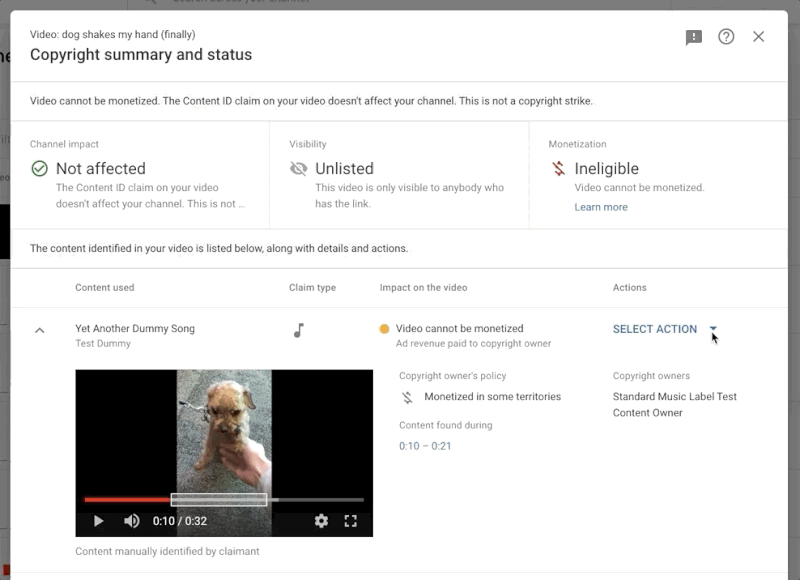
Copyright disputes between creators and music labels or third-party companies are a consistent problem on YouTube. The company has tried to work with different companies to ensure that creators aren’t constantly facing copyright claims, but it’s been a tedious battle. Earlier this year, creators specifically called out groups like Universal Music, which owns one of the largest catalogs of songs, for being overzealous with copyright claims.
YouTube rolled out a new policy update in July addressing concerns, noting that copyright owners like Universal now must state exactly where copyrighted material appears in a video, something they didn’t have to do before when reporting a case of copyright infringement.
Creators can also filter through their video feeds in Studio to specifically see which videos were hit with copyright claims — leading to demonetized statuses or blocked videos entirely — much more easily. In an effort to be more transparent, the YouTube team is also showing copyright strikes, which are different and far more severe than copyright claims, directly on their Studio Dashboard.
“We’re also providing more transparency about the content of the copyright takedown than ever before, now surfacing the specific description of the copyrighted work provided by the claimant in the takedown notice,” the blog post reads.
YouTube’s blog post also notes there are “many more updates” coming in 2020 that will help creators navigate copyright claim messiness that often plagues their experience. For now, the company is trying to make it easier to work with copyright claims, appeal ones they think are unfair, and keep a closer eye on what’s getting hit.

CULTURE
Content Courtesy of: theverge.com
Written by: Ashley Carman
The decade in babies
Babyfication as a trend

This decade, babies took on a new life. Everyone wanted to be a baby, and particularly this year, babies dominated the meme cycle. We’re obsessed with babyfication — turning everything into a baby including ourselves and beloved characters. Unlike infantilization, babyfication suggests corporate strategy, foresight about how turning users or characters into babies will spur brand visibility.
I can’t pretend to understand why we’re baby-crazy, except for positing that it has something to do with a complete lack of control over the world and our lives. Climate change is going to burn up the Earth; wealth inequality is rampant; and generally, many things are bad. Babies, on the other hand, are good. They’re innocent and pure. They don’t know how horrible the world can be; they’re just babies. Babies are cute. We love babies. (We can’t help it, genetically!)
Maybe recounting the top baby moments of this decade will help us come to some sort of conclusion on babyfication and what it means for 2020 and beyond. Will the reign of His Majesty, The Baby ever end?
2014: BABY GROOT
Is it possible Baby Groot is the trendsetter? Groot, a character from Guardians of the Galaxy, dies in the original movie and is re-spawned in a post-credits scene as a tiny baby tree. He then shows up in the second Guardians of the Galaxy as a legitimate baby.
Disney has always been baby-obsessed, which makes sense: its target demographic is children. There is, for instance, versions of Mickey Mouse as a baby, wherein Disney scaled down the popular Mickey Mouse to baby size. The difference is that now, Disney owns more adult-oriented brands, like Marvel and Star Wars. (This also means more merchandising opportunities than just toys and action figures: perhaps adults want a Baby Groot for their desk.)
Baby Groot was Disney’s first viral baby moment for its adult brands, and it proved that adults would not only love a baby character, but use it in memes and buy its merch.
2016: “BABY SHARK”
The kids couldn’t stop singing “Baby Shark,” and then the adults couldn’t either. The internet tells me “Baby Shark” really took off around 2016, but frankly, it feels like it’s existed forever. I can’t remember a time before “Baby Shark.” It’s just part of my brain now. Like every viral trend, Ellen DeGeneres featured the song on her show in 2018, creating her own version, and introducing a group of people, most without young kids, to the song. She points out that one “Baby Shark” video has over a billion views. The “Baby Shark” generation has arrived.
2017: BOSS BABY

Boss Baby doesn’t have great reviews, but it was nominated for Best Animated Picture during the 2018 Oscars and grossed over $500 million globally in theaters. It debuted in 2017, just after Donald Trump became president of the United States, pushing Vanity Fair to ask whether this was a movie about Trump. A baby as a boss? A baby running our country? Could it be?
This feels like the biggest hint to the decade’s proliferation of babies. The fact that a publication even asked whether this movie was actually about the US president suggests something deeper: a lack of control over politics, sure, but also maybe a surrendering to a more powerful, bigger baby.
2019: “I’M BABY.”

2019 is the year for baby content, and this time, instead of bowing down to big babies, we ourselves are the babies. “I’m baby” as a meme goes back to 2017, according to Know Your Meme. The original is grim: a young woman texted her mother about a home invasion — because if she spoke, the intruder would hear her. Her mother replied, and her phone autocorrected a text to “I’m baby. Call 911.” After circulating on Tumblr, the phrase went viral on Twitter two years later. Then, it came to TikTok, too, with people showing photos of themselves as babies as part of the “I’m baby” trend. We were once all babies, and we still can be — it’s more of an essence thing.
2019: SNAPCHAT’S BABY FILTER

Snapchat’s baby filter took over the internet, even outside of Snapchat. The premise is simple: see what you looked like as a baby, but now. Your skin is smoother; you’re weirdly kind of hot? Kim Kardashian West briefly loved the baby filter and posed with it on Instagram, too. Snapchat said its platform grew by 7 to 9 million users solely because of its baby and gender-swapping filters. The people want to know what they’d look like as a hot, thirst-trap baby.
2019: DEATH STRANDING’S BRIDGE BABY

I haven’t played Death Stranding, and I don’t entirely know what a Bridge Baby, or BB, does in the game. All I know is you hear it cry constantly throughout the game, and the baby is more creepy than cute. The Verge’s games editor Andrew Webster says about the babies:
“A large chunk of Death Stranding’s dense lore is dedicated to BBs — there’s more than just one, as they’re a fairly standard tool for travelers — and where they came from. Death Stranding’s post-apocalyptic future is one nearly devoid of history. Most records have been lost or destroyed, but as you slowly rebuild a network that links together America, more details come to light. Throughout the game, Deadman, a scientist with the exact likeness of Guillermo del Toro, regularly shares newly uncovered details about the origin of these weird little babies.”
2019: BABY YODA

Baby Yoda is everything we want in a baby: big eyes, big ears, cute little hairs, a shearling coat, and constant goo-goos and gah-gahs. Like Baby Groot before him, Baby Yoda is cultural currency for Disney that translates into actual profit. More than Baby Groot, Baby Yoda lives in meme form. We can project onto Baby Yoda: he’s every mood and everything we could ever want. At the same time, we want a piece of Baby Yoda in the form of merch, which Disney delayed releasing until 2020, but will definitely sell once it’s released.
2019-2020: BABY SONIC
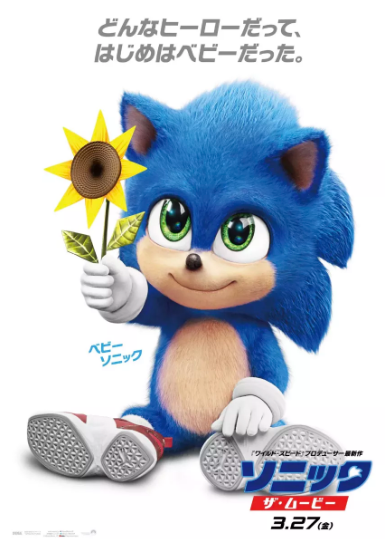
As the year and decade comes to a close, we have been introduced to a final baby: Baby Sonic. We can’t yet say what Baby Sonic is about, other than looking cute, but this feels like something ripped out of Disney’s playbook — taking a beloved character and making it a baby. Baby Sonic also previews another decade of babies. We love them; we can’t resist them. They aren’t going away.
FASHION
Bottega Veneta Shoes Look Just Like Instant Ramen
Content Courtesy of: wmagazine.com
Written by: Jocelyn Silver
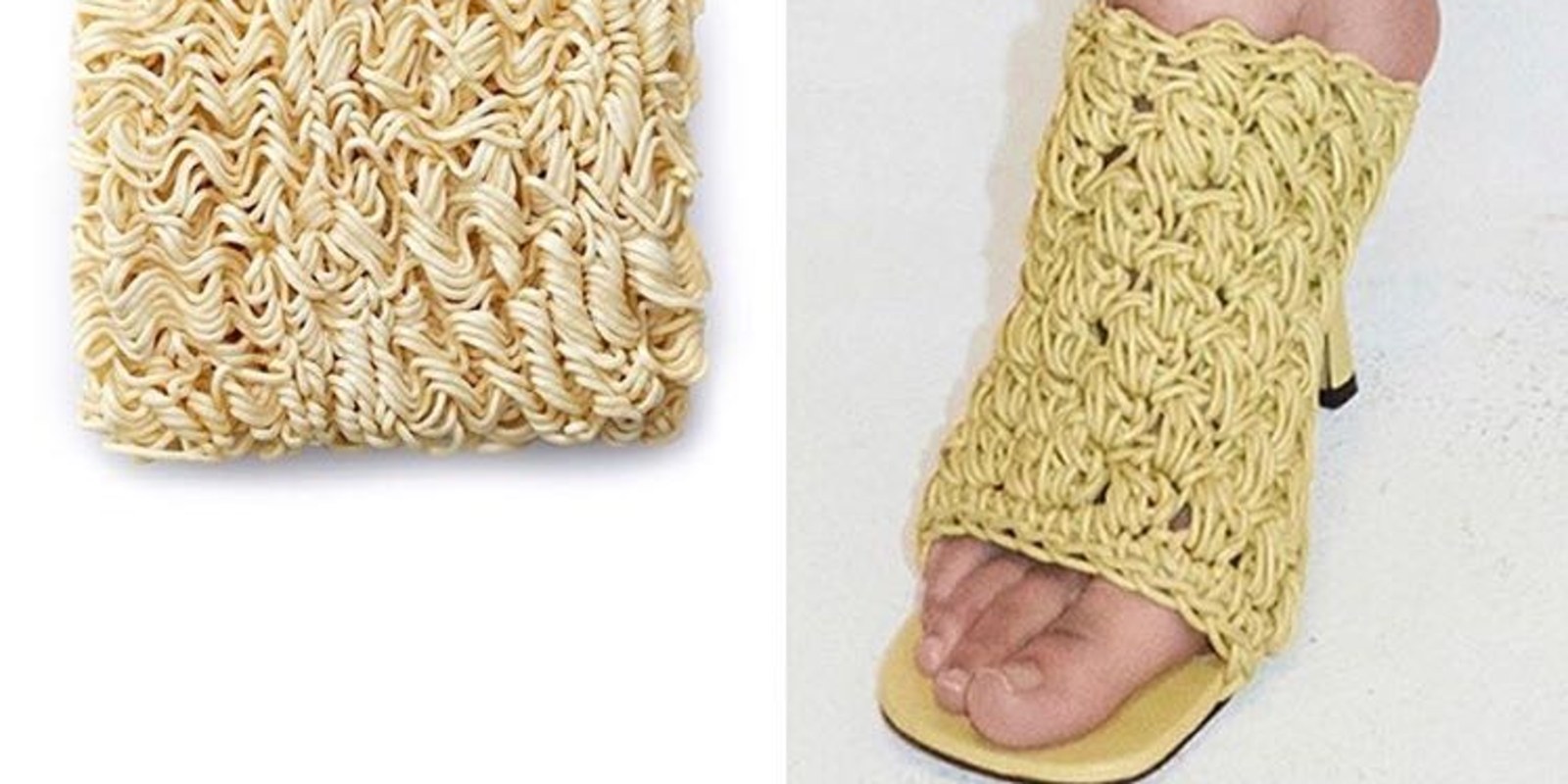
Bottega Veneta shoes are inescapable–the square-toed mules were a fashion week staple, the Lido sandal a must for every street style slideshow throughout fashion month in September. According to the Lyst Index, as of October, the quilted shoe was the most sought-after women’s fashion product in the world, with more than 27,000 people searching for the style online each month. Creative director Daniel Lee was ahead of the square toe curve, and created a bestselling, ‘90s inspired phenomenon.
But for Bottega Veneta’s 2020 pre-fall collection, Lee looked to a different ‘90s-style source: ramen noodles, just like Justin Timberlake’s NSYNC hair. As Diet Prada pointed out on Instagram, a pre-fall shoe–a macramé style that comes as an open-toed mule or clompy open-backed bootie–bears an uncanny resemblance to instant noodles. They come in a light tan and yellow, looking exactly like the bricks of noodles we inhaled at 4 AM in college. Crack an egg on them for a gourmet touch.
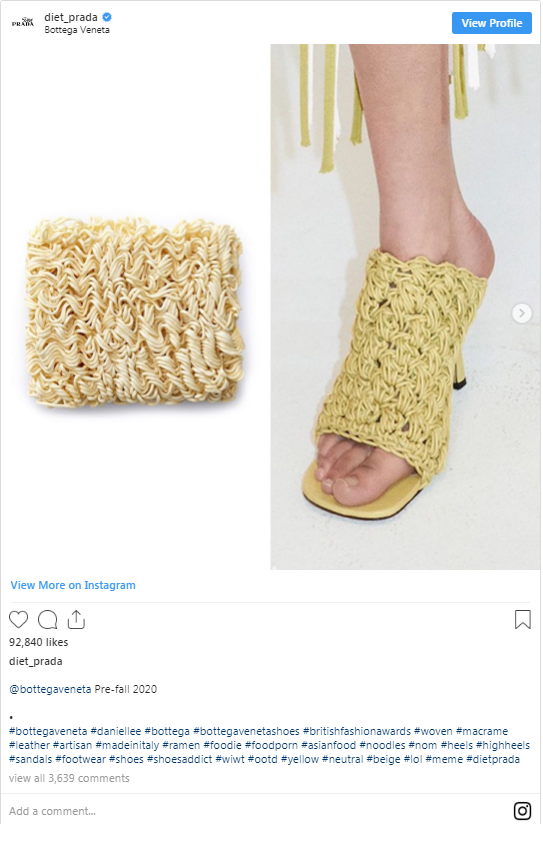
Last year, Lee spoke about his understanding of Bottega Veneta as a brand—he probably wouldn’t be thrilled with the JT comparison. “Bottega is a brand that talks about sophisticated elegance. It’s almost about being quiet,” the designer told Vogue’s Nicole Phelps. “A silence in all the noise. A kind of stillness.”
WATCHBottega Veneta Spring 2012
“For me, life is really all about living in the moment,” he said. “I don’t have social media. I try and use my cell phone as little as possible. I definitely prefer human interaction. That’s very important to me and to the work I do. Design is also about living in the moment. It’s about working with whatever you have at hand and making the best of a situation. Celebrity? I think it’s a very different kind of world than what we’re in.”
Lee may be extremely offline for a millenial, but we bet he’s still seen the ramen meme. Some influencer better take a photo of the shoes in a bowl.
Noen Eubanks, TikTok Teen, is the New Face of Celine
Content Courtesy of: wmagazine.com
Written by: Kyle Munzenrieder
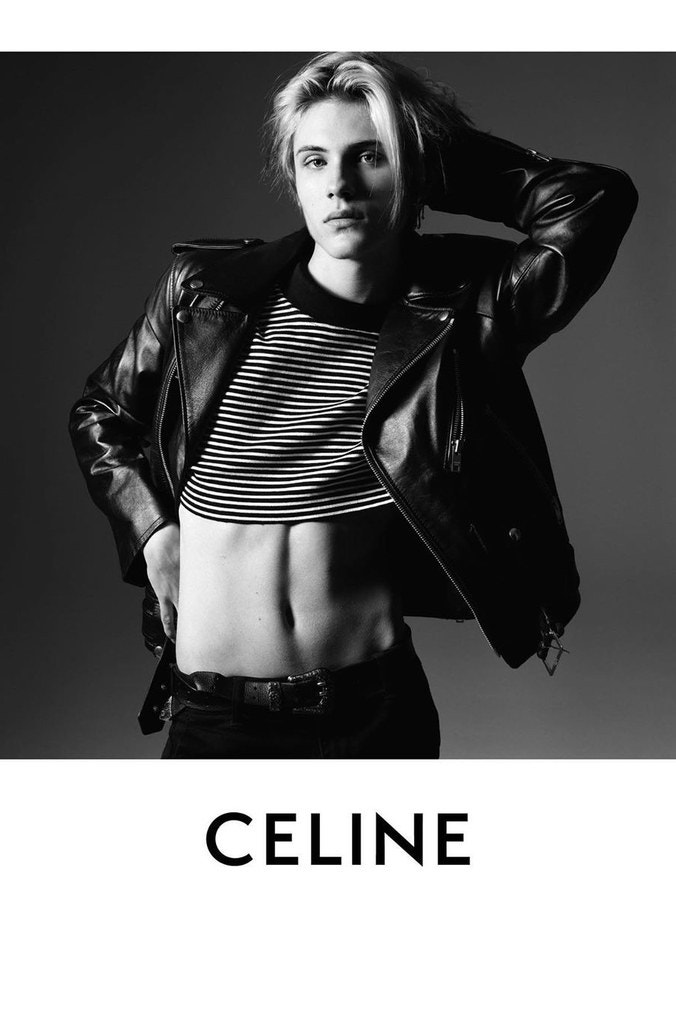
74-year-old French fashion brand Celine has picked 18-year-old Noen Eubanks, a star on the three-year-old social video platform TikTok, as it's newest face. The easy joke to make here might be "and now you feel old," but maybe it just proves that time is a flat circle.
Celine posted the latest campaign on its Instagram earlier today, identifying Eubanks as a "teen idol" rather than a "TikTok" star (though, we suppose TikTok stars are technically today's teen idols).
The brand's creative, artistic and image director Hedi Slimane photographed Eubanks, pictured in a leather jacket and stripped crop top.
Eubanks has amassed 7.5 million followers on TikTok. That's impressive, considering he told Paper earlier this year that he had only joined the app in 2018, and only saw his followings rise drastically starting earlier this year. Despite a bad boy image (that is, thanks to his two-toned fluorescent hair and general penchant for neon, not that far from Billie Eilish's "bad guy" image), Eubank's videos on the platform are mostly silly fun. There's lots of dancing, lip-synching, quick edits, and experimentation with makeup and hairstyling. Cool moms would approve.
By may of this year, Eubanks signed a deal with the "youth entertainment company," Kyra. The agency essentially helps its stars produce content as well as strike brand partnerships (he's also launched his own brand of merch since joining the agency).

Eubanks' quick trajectory from a kid living in the Atlanta suburbs to one of fashion's buzziest brand faces might perplex anyone over 25, but rendered in Slimane's black-and-white portraits, it's easier to understand.
With his high cheekbones, pouty lips, pale skin and floppy hair, Eubanks looks like the classic Slimane male model. Visually, Eubanks wouldn't have looked out of place in Slimane's campaigns for Dior Homme last decade or at Saint Laurent just a few years ago.
This isn't the first time the star of an emerging video platform has risen from anonymity to fashion star at lightening speed. A few years ago, Cameron Dallas caused a massive spectacle outside of a Dolce & Gabbana show in Milan.
The more things change, the more things stay the same.
The Best Sneakers of 2020
Content Courtesy of: marieclaire.com
Written by: Marina Liao
Yes, you need a pair.
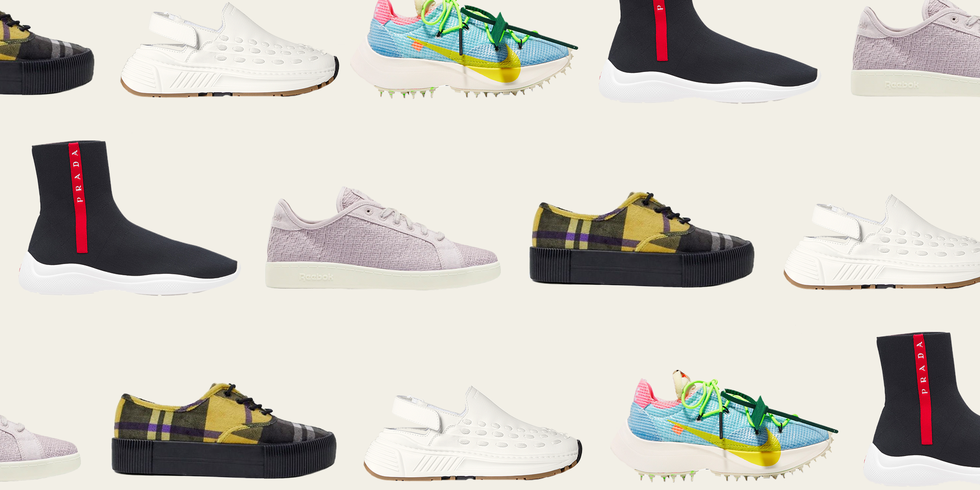
Good news, everyone: Sneakers are still in for 2020. For the new year, expect your favorite staple to receive some major style upgrades, whether in a brand-new color or crafted from sustainable material. Dad sneakers, in particular, have ruled the roost for the pass few seasons, which begs the question: What's next? Will it be the cutout sneakers we saw at Kate Spade New York's spring '20 show? Or, perhaps, the platform styles that ruled R13's spring '20 runway? Ahead, we predict what sneakers will be popular in 2020. The best part: You don't have to wait to shop them.
FOOD
PepsiCo unveils new cola blended with coffee
Content Courtesy of: foodbusinessnews.net
Written by: Rebekah Schouten
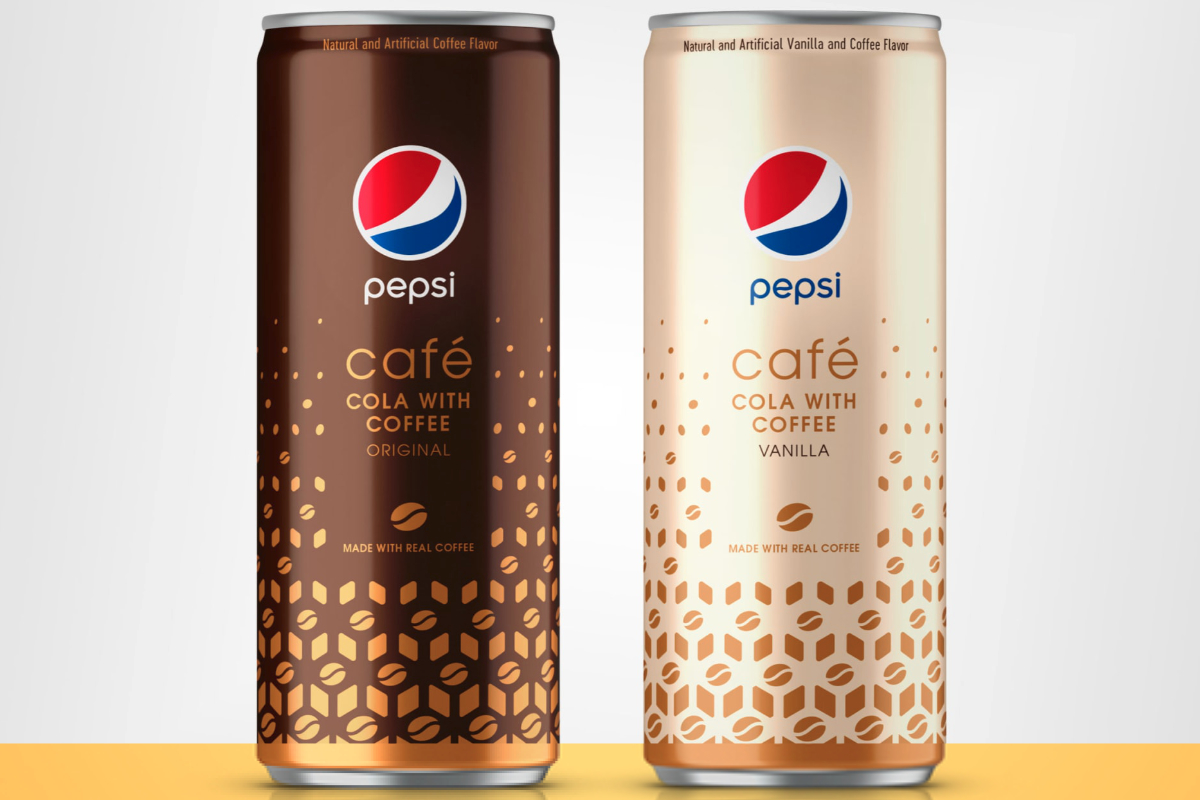
PURCHASE, N.Y. — Coffee and cola collide in Pepsi Café, a new beverage from PepsiCo, Inc. set to launch in April 2020.
Featuring a blend of roasted Arabica coffee and Pepsi cola, the drink contains nearly double the amount of caffeine found in a regular Pepsi soda. Pepsi Café is packaged in 12-oz slim cans and will be available in original and vanilla varieties.
“We know that the consumers today are looking for products that meet the needs of energy, indulgence and refreshment during that afternoon pick-me-up occasion,” said Todd Kaplan, vice-president of marketing for PepsiCo. “At Pepsi, we’ve known the potential of blending cola and coffee for years, and, after striking the perfect balance, we cannot wait to introduce Pepsi Café to the U.S. next year. We are confident that cola fans, iced-coffee drinkers and anyone in need of an extra caffeine boost will love the unexpected flavor medley of roasted coffee infused into the refreshing, crisp flavor of Pepsi.”
Pepsi Café is not PepsiCo’s first attempt at brewing up a beverage combining coffee and cola. In 1996, the company debuted Pepsi Kona and tested it for a year in Philadelphia. The coffee-flavored Pepsi was discontinued in 1997 due to low sales.
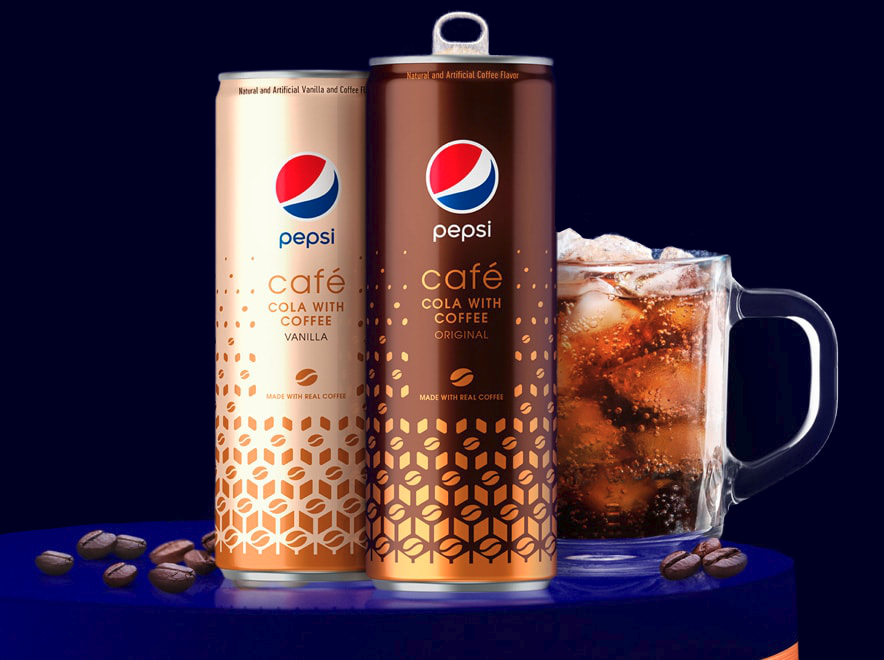
PepsiCo is also not the only beverage manufacturer to introduce this type of blended beverage this year. In April, the Coca-Cola Co. announced plans to launch a similar product — Coca-Cola Plus Coffee — in 25 countries in 2019. The beverage may come to the U.S. market depending on how consumers respond to the drink, Coca-Cola said.
Storytelling takes top spot in Innova’s 2020 trends
Content Courtesy of: foodbusinessnews.net
Written by: Jeff Gelski
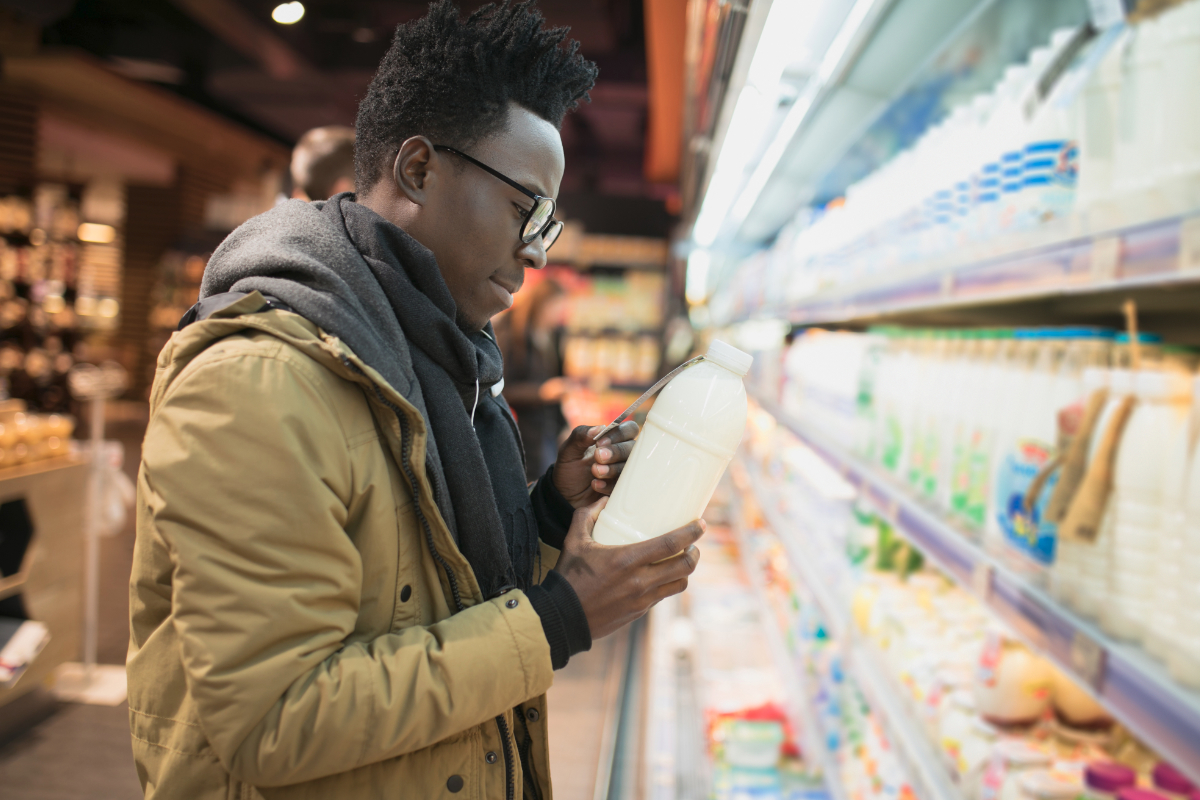
PARIS — Consumer interest in authenticity and transparency almost demands companies tell a story about their products, which is a reason why Innova Market Insights ranked storytelling as the No. 1 trend among its top 10 trends for 2020. Survey findings from Innova show 56% of global consumers say stories around a brand influence their purchase decision.
“Even if you make condensed soup, tell consumers why you make it like that,” said Lu Ann Williams, director of innovation for Innova, in a Dec. 4 presentation at Food Ingredients Europe in Paris.
Consumers mostly want to know about the ingredients in a product and the origin of the ingredients. Food and beverage companies may focus on ingredient storytelling in several ways: detailing culture and tradition, explaining where the ingredients are sourced or telling how they are processed. Ms. Williams pointed to Una Celebración, a Danone yogurt in Mexico. All the ingredients are sourced from Mexico.
While walking the Fi Europe exposition floor, Ms. Williams said she noticed how ingredient companies are telling stories, too. One booth promoted milk powder from Germany while another booth played up flavors from Turkey.
“That’s also part of the story, right?” Ms. Williams said. “It adds a layer of depth to consumer products as well. So now we’re saying you will win with words. You have to tell a story about your product.”
The No. 2 trend, plant-based products, shows no signs of slowing.
“This year it has absolutely exploded,” Ms. Williams said. “In my 25-plus years in the industry I’ve never seen anything pick up as fast as this. This has legs. It will be around forever.”
The average compound annual growth rate for food and beverage launches with a plant-based claim was 68% from 2014-18, according to Innova, which is based in Arnhem, The Netherlands. Ms. Williams said promoting the products as plant-based might work better than promoting them as vegetarian or vegan. She said vegan may be polarizing in that consumers may perceive that the product has problems with taste and texture.
Plant-based meat and dairy alternatives continue to rise in sales, but companies now should focus on making the items more clean label, she said.
Consumer interest in sustainability, the No. 3 trend, rose this year. In 2018, 65% of global consumers said they expect companies to invest in sustainability. The percentage increased to 87% in 2019.
Consumer interest in sustainability varies by geographic region. French consumers care most about organic, Ms. Williams said, while animal welfare is the top concern in Germany and food waste is the top concern in America.
“Consumers have really broken into little niches,” she said. “So you have to know your consumers.”
The right bite, the No. 4 trend, refers to consumers expecting many choices. Innovation should consider consumers who are managing careers, families and social lives while maintaining healthy lifestyles. One example is consumers wanting to relax in the evening and partaking in chocolate cake or alcohol to relieve stress, Ms. Williams said.
Consumers wanting richer experiences and a greater feeling of indulgence ties into the No. 5 trend — texture.
“Texture is a great way to tap into that,” Ms. Williams said.
Trend No. 6 involves perceptions of macronutrients. In protein, plant protein sources have become prominent, Ms. Williams said. In fat, margarine is seen as plant butter, a more positive perception. In carbohydrates, sugar is viewed negatively.
“Sugar is definitely the demon,” Ms. Williams said.
The Coca-Cola Co., Atlanta, has taken advantage of trend No. 7, hybrid products. Coca-Cola brand products now include coffee, energy drinks and fruit flavors. Beverages containing a blend of dairy milk and almond milk alternatives are examples of hybrid products as are products containing a mixture of meat and plant-based protein.
A star is born, trend No. 8, refers to specific ingredients shooting up in consumer popularity. Probiotics once fit into this category, but now they are mainstream. Ashwagandha often is promoted at trade shows, Ms. Williams said.
“But it’s still quite low on the familiarity scale with consumers,” Ms. Williams said.
Cannabidiol (C.B.D.) could be a hit at trade shows in 2020, Ms. Williams said. The U.S. Food and Drug Administration recently said it could not guarantee that C.B.D. is Generally Recognized As Safe (GRAS) for use in foods, beverages of dietary supplements.
Nootropics, which are associated with mental health, show potential as a new star ingredient.
Eat pretty, which is trend No. 9, involves ingredients associated with muscle health, hair health and skin health, Ms. Williams said. She called these traits cosmeceutical.
Brand unlimited, trend No. 10, refers to consumers wanting more personalization in their products, which has led to a rise in seasonal and limited-edition items. Ms. Williams said two in five global consumers agreed with the statement, “I would love to design my own limited-edition product.”












